Affiliate links on Android Authority may earn us a commission. Learn more.
Nokia in 2019: Onwards and upwards
March 6, 2019
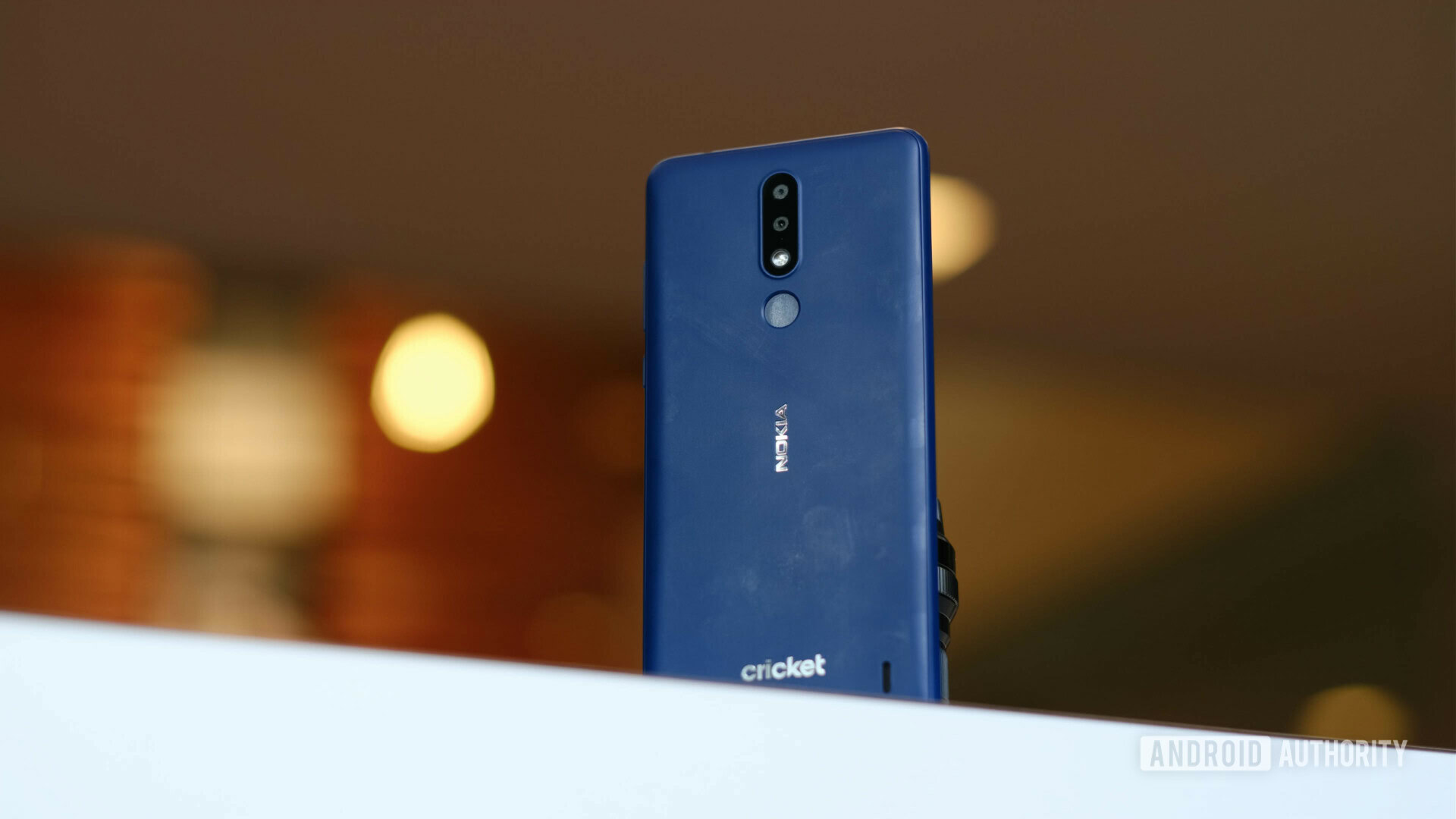
Early in 2017 a ragtag group of ex-Nokia employees came up with a plan to restore the company to its former glory. Since then, the company has introduced a range of entry level and mid-range phones as well as a few not-quite-flagship, high-end smartphones. It would be fair to say that it’s been a slow and steady recovery for the brand.
In 2018, HMD started making inroads into capturing a larger slice of the global smartphone market and the Finnish OEM will be looking to continue that upward trajectory in 2019. Let’s take a look at the Nokia brand in 2018 and what potentially lies ahead for the revived giant in 2019.
Delivering the goods
2018 was a watershed year for HMD Global. The company finally started delivering on its promise, with devices that really carried forward the ethos of Nokia’s legacy.
The products had a close focus on everyday usability, a clean and fast Android build thanks to Android One, and really high-quality hardware. HMD Global finally hit a stride and delivered some stand out smartphones like the Nokia 8.1 that struck a great balance between price and performance.
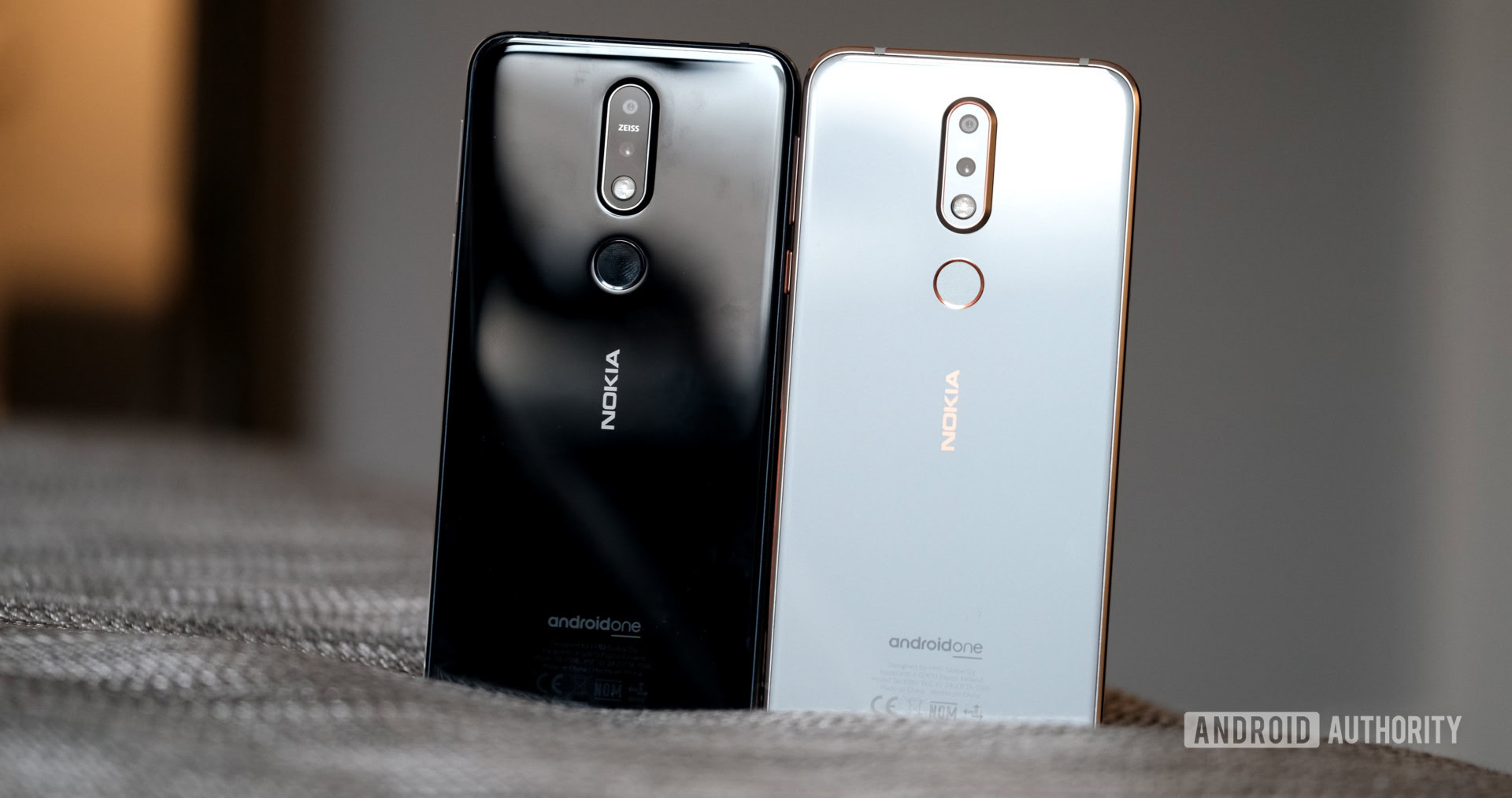
Starting off at Mobile World Congress 2018, HMD began fleshing out its product portfolio by filling up gaps across price points.
The Nokia 8110 4G was one of the most talked about devices at MWC — a true testament to brand recall and the power of nostalgia.
MWC 2018 was also where Nokia started showing off its attention to design and detail. The Nokia 8 Sirocco edition stood out as a gorgeous slab of glass that put an emphasis on ergonomics, style, and stock Android over all-out power. The phone was, unfortunately, destined for failure due to a year old processor, high price tag, and lackluster camera.
While the phone had its fans, it would be fair to say that the Sirocco did not live up to expectations overall.
Read more: Interview: HMD’s Juho Sarvikas talks Nokia updates and Pie
While the Nokia 8 Sirocco and 8110 served well to bring the eyeballs, the Nokia 1 was quietly a bigger deal. A sub $100 smartphone running Android Go, the phone brought the power of apps and a smartphone ecosystem to a market that was, for the most part, untouched by a globally recognized smartphone manufacturer. The phone was far from a high-end Android smartphone experience — reflected in middling reviews — but the Nokia 1 delivered the goods for the target segment.
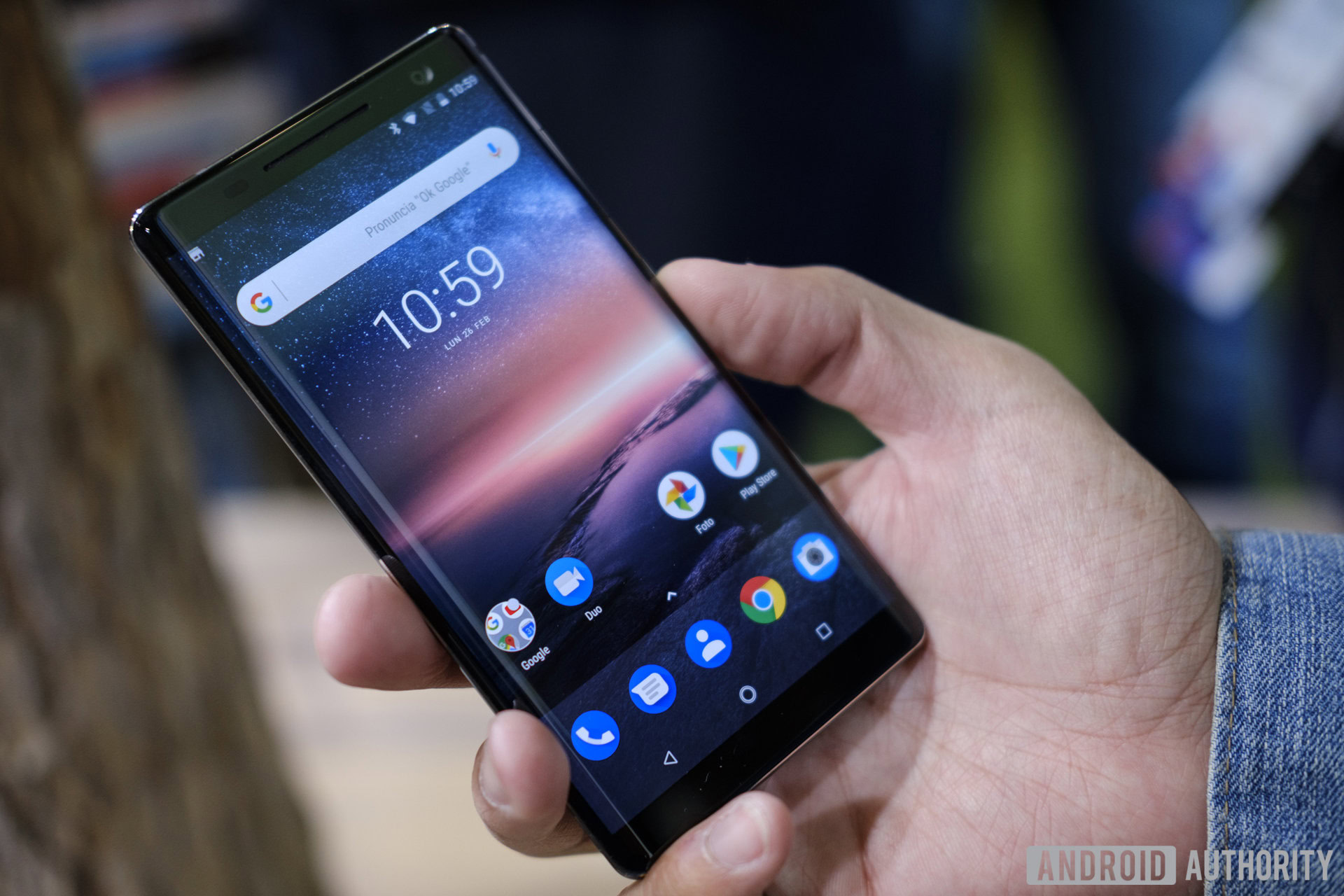
Fast forward a couple of months and Nokia had products at nearly every price point. The bread and butter, of course, continued to be the affordable mid-range segment. The Nokia 6.1, in particular, has been HMD’s best selling device to-date.
Along the course, we also saw HMD catching up with the latest trends like notched displays with phones like the excellent Nokia 7.1 and Nokia 8.1.
Let’s talk business
In the last two years, HMD Global has managed to ship over 70 million phones. That might sound quite impressive until you realize the figure includes shipments for feature phones.
According to Counterpoint Research, smartphone shipment numbers for HMD in the third quarter of 2018 were just 4.8 million. While the figure was a 71 percent leap year on year for HMD, it represents a drop in the bucket when compared to other smartphone manufacturers.
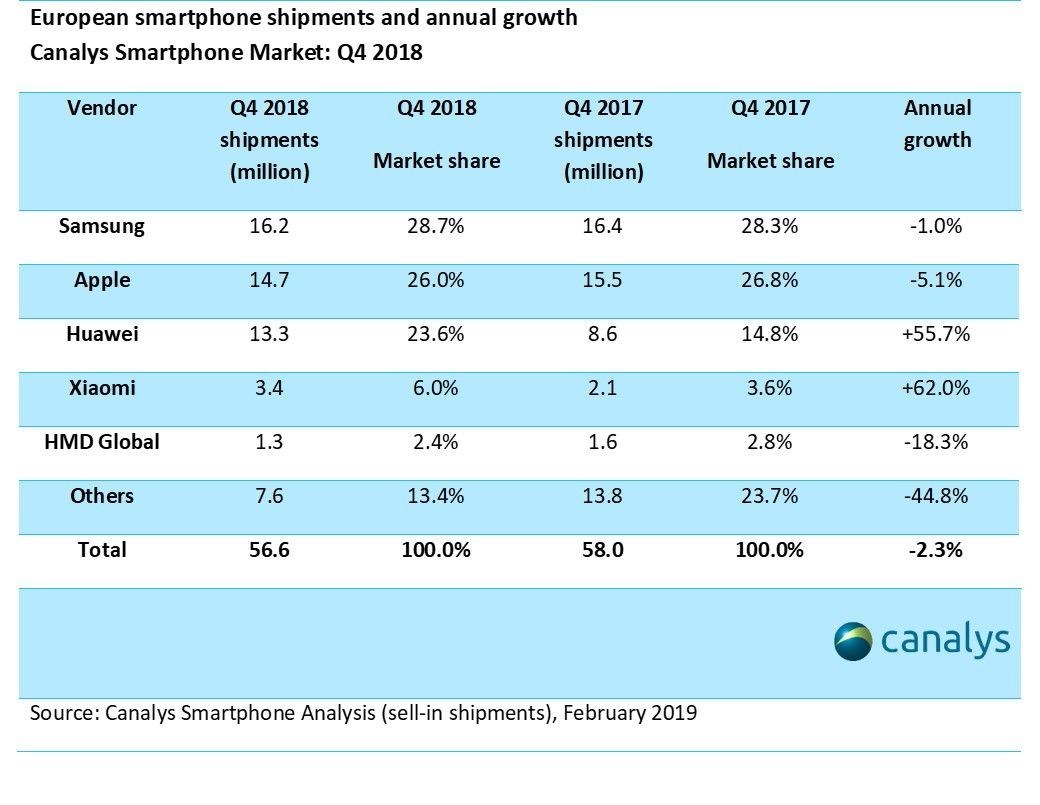
Nokia might occupy the ninth place for shipment numbers amongst global smartphone brands but its work is cut out for it. Interestingly, the company admitted it is having a hard time selling high-end phones, with the prime example being the low return on the Nokia 8 Sirocco.
It makes perfect sense that the phone didn’t really sell that well since it didn’t really pack top end internals or stand out features. While a focus on usability is great, it’ll take more to compete against brands like Huawei and Samsung.
Notably, the company has doubled down on the Indian market. This isn’t really surprising since the country is the second largest smartphone market by sheer volume. It also contributes significantly to HMD Global’s shipment numbers.
As the mid-range segment in India starts to show almost 20 percent growth year on year, it presents a fantastic opportunity for HMD Global to grow.
What lies ahead?
2019 started off with well for Finland’s finest, with HMD Global announcing its return to the U.S. market. The North American product portfolio might not be all that exciting to the discerning smartphone buyer but it allows HMD to compete in a category with limited alternatives.
As high-end smartphones touch and cross the $1,000 mark, there is a growing market for entry-level and mid-range smartphones. Unlocked Nokia phones have been available in the US for a while now but carrier partnerships are essential to make significant headway in the region.
With 30 percent of North American consumers buying value-tier devices, we see a clear opportunity to make a mark in the value segment of the market.Maurizio Angelone, vice president at HMD Americas
Yes, the Nokia 3.1 and Nokia 2V aren’t the most interesting devices around but present a credible alternative for users who need just the basics. With modest specifications, they don’t grab headlines like flagships do but there is a clear demand for devices in this segment. Nokia aims to be a full service provider from the sub $100 segment all the way to flagship-grade hardware.
Now, more than ever, Nokia is close to achieving that goal with at least one phone in every price brand, especially with a brand new flagship phone waiting to take on the elite competition.
Can PureView paint a brighter picture?
At MWC 2019, HMD Global finally announced a premium smartphone with a deep focus on high-quality imaging. Dubbed the Nokia 9 PureView, it has the design and build quality chops that Nokia is known for while combining it with the shock value of a five camera module. Given the legacy of the PureView branding, Nokia had to go out of its way to create a unique solution deserving of the tag.
PureView was the branding adopted by Nokia back in the day for devices that pushed the boundaries of smartphone imaging. It all started with the Nokia 808 and its then unheard of 41MP camera. The Nokia Lumia 1020 and similar devices continued that legacy.
The Nokia 9 PureView is an intriguing phone, with five cameras at the back. Built in collaboration with Light, the phone sports two RGB sensors and three monochrome sensors that all work in tandem to increase dynamic range and create a better depth map. Expected to be a limited edition device, the Nokia 9 PureView could make a world of difference for the company as far as brand visibility is concerned.

The Nokia 9 PureView also ships at a time when there is a focus on computational photography. The Google Pixel and HUAWEI Mate 20 Pro come across as prime examples of what can be achieved through software, hardware, or a potent combination of both.
There’s a lot of hype around the phone and if Nokia can deliver on its promise of bringing truly high-quality imaging to a smartphone, the device should find a lot of success. It certainly doesn’t hurt that the phone will be available in the U.S.
By pricing the phone under $700, Nokia is also massively undercutting the competition on pricing. A $699 flagship smartphone is a pretty big deal. Users who live on the cutting edge of tech might be jaded by last year’s processor, but this is the same chipset as Google’s own Pixel 3, and HMD claims to be pushing the SoC’s performance to places we’ve not seen from any other Snapdragon 845-powered phone.
Tack on a great looking, HDR-capable display, a gorgeous build, and the absolutely unique camera arrangement and you are looking at one of the most affordable flagships around.
Competition
Success, however, isn’t guaranteed as Chinese smartphone brands make inroads into Europe and continue to dominate in India — two of HMD’s main target markets.
In Europe, the entry of Huawei, Honor, and Xiaomi has had a profound impact on the market share of competing brands. The latest report published by Canalys points at an 18 percent decline in HMD’s annual growth in the region.
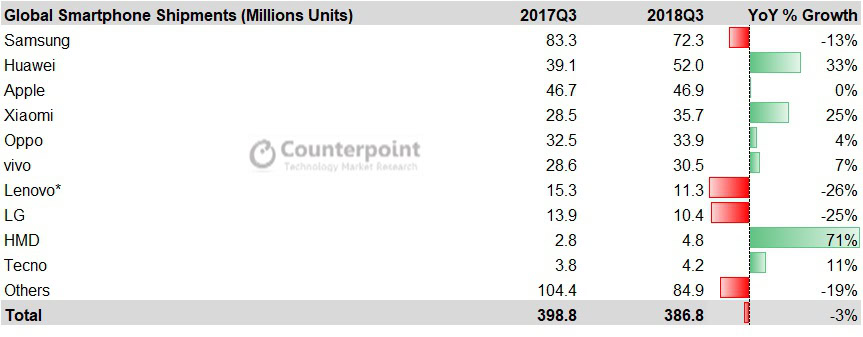
A big contributing factor to this was Xiaomi doubling down on its European efforts. The Chinese giant leapfrogged over Nokia to gain a six percent market share. With HUAWEI and Xiaomi increasing their market share by well over 50 percent year-on-year, newcomers like HMD Global are sure to feel the pinch.
This is all the more relevant in price-conscious markets like India. Xiaomi’s strategy is built on providing top-notch hardware at unbelievable prices. The Redmi Note 7‘s unbelievable $200 price point in India makes it hard for most OEMs to compete.
Xiaomi’s revenues, of course, come from the onboard software services. The company’s phones have ads strewn across apps and Xiaomi upsells themes, ringtones and more through the onboard app store. This strategy is rather hard for Nokia to replicate given its approach (or lack of one) towards customs skins and preloaded apps.
With that in mind, it makes perfect sense for Nokia to double down on its U.S. efforts where it does not face competition from the major Chinese smartphone vendors (yet).
Forecast
Nokia has played the underdog for the last two years, but it is time for the company to step up. Gradually building market share isn’t enough. Challenging market conditions in Europe with increasing competition means Nokia will need to work twice as hard to differentiate its own products.
Nokia's 2019 line up is a showcase of clean Nordic simplicity.
Nokia has the opportunity to corner the mid-range segment, where it does not necessarily need to play the specs game. A design-first strategy could do the trick for the target demographic. Unlike the somewhat off-putting gradients being used by some brands, Nokia’s 2019 line up is a showcase of clean Nordic simplicity and that can be a big draw for prospective buyers.
Combined with Android One‘s promise of fast updates, these phones are a compelling alternative. While the limited edition Nokia 9 PureView may not be the answer to HMD’s flagship woes, its outside-the-box approach towards imaging could help gain some brand cachet as an innovator.
Read more: The Nokia 9 PureView is exactly the kind of innovation that HMD needs
In the highly lucrative Indian market, HMD will need to focus harder on marketing efforts as well as a broader high-spec portfolio. A true high-end flagship will also go a long way in making sure Nokia doesn’t get relegated to a value segment player — a reputation Xiaomi found very hard to get rid off in India.

The North American market represents a beacon of opportunity for HMD Global in 2019. Nokia as a brand carries a lot of nostalgia and legacy value. HMD Global, with a fresh product portfolio across price points, is now in a position to capitalize on this brand appeal.
Backed by products with a solid foundation in design, software, and widespread availability, HMD might just be able to hold the fort against Chinese competition, and perhaps even gain some ground in 2019.